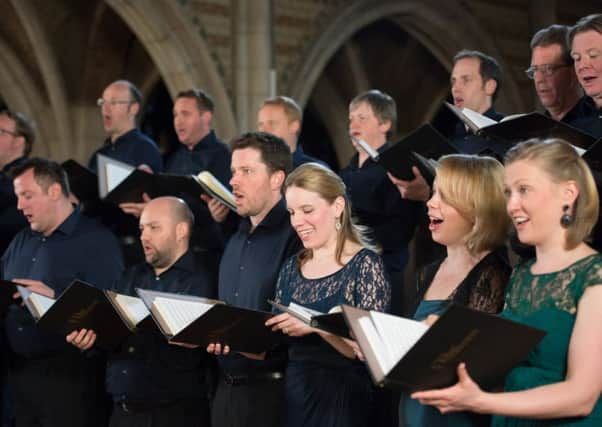Review: Perfection is to be expected (The Sixteen, Peterborough Cathedral)


But there were some surprises too, the most remarkable being the finale of Vivaldi’s Sinfonia La Dorilla. Though I was thoroughly enjoying the energetic and effervescent playing of the orchestra I had to admit that it was a work I’d not heard before. Then the third movement began and it turned out to be one of the best known tunes ever written! The catchy number was none other than the opening of Spring from the Four Seasons! Though without the trilling birds and the flowing streams.
Another surprise was the plethora of unusual and visually appealing continuo instruments featured in this concert. In Baroque times the bass-line was enhanced by chords and other material improvised by the players. Usually left in the hands of a cellist and harpsichord player nowadays, in this performance there was a magnificent violone resembling a double bass, an ‘early’ bassoon, and two small Baroque cellos. Not to mention a portative organ doubling harpsichord and, most surprising of all, a harp, and the spectacular long-necked bass-lute known as the theorbo.
Advertisement
Hide AdAdvertisement
Hide AdThe final surprise was that the violinists and viola players plus oboists and trumpeter stood throughout the performance. Or rather it was a surprise till I remembered that early music groups like I Musici and the Virtuosi di Roma always stood to perform. Probably giving more rhythmic impetus to their playing and probably in accordance with 18th century practice.
Finally to the music itself. As every music student knows Bach and Handel were both born in 1685 and Vivaldi just seven years earlier. Between them they represent the full flowering of the Baroque in music and it’s inevitable that their musical language has a lot in common, including intricate instrumental-type vocal lines and plentiful use of sequences.
In this concert however it was the differences between them that were more noticeable than the similarities. The Italian composer is arguably the most direct and passionate of the three, as for instance in the throbbing chords of Et in Terra Pax from the Gloria. Handel’s music is more robust but with moments of touching lyricism, an example being the lovely Bow Down the Knee from the final chorus of Esther. While Bach always seems to add an extra dimension of depth and profundity as we heard throughout the Mass in G.
So no surprise there!
Review: Joe Conway